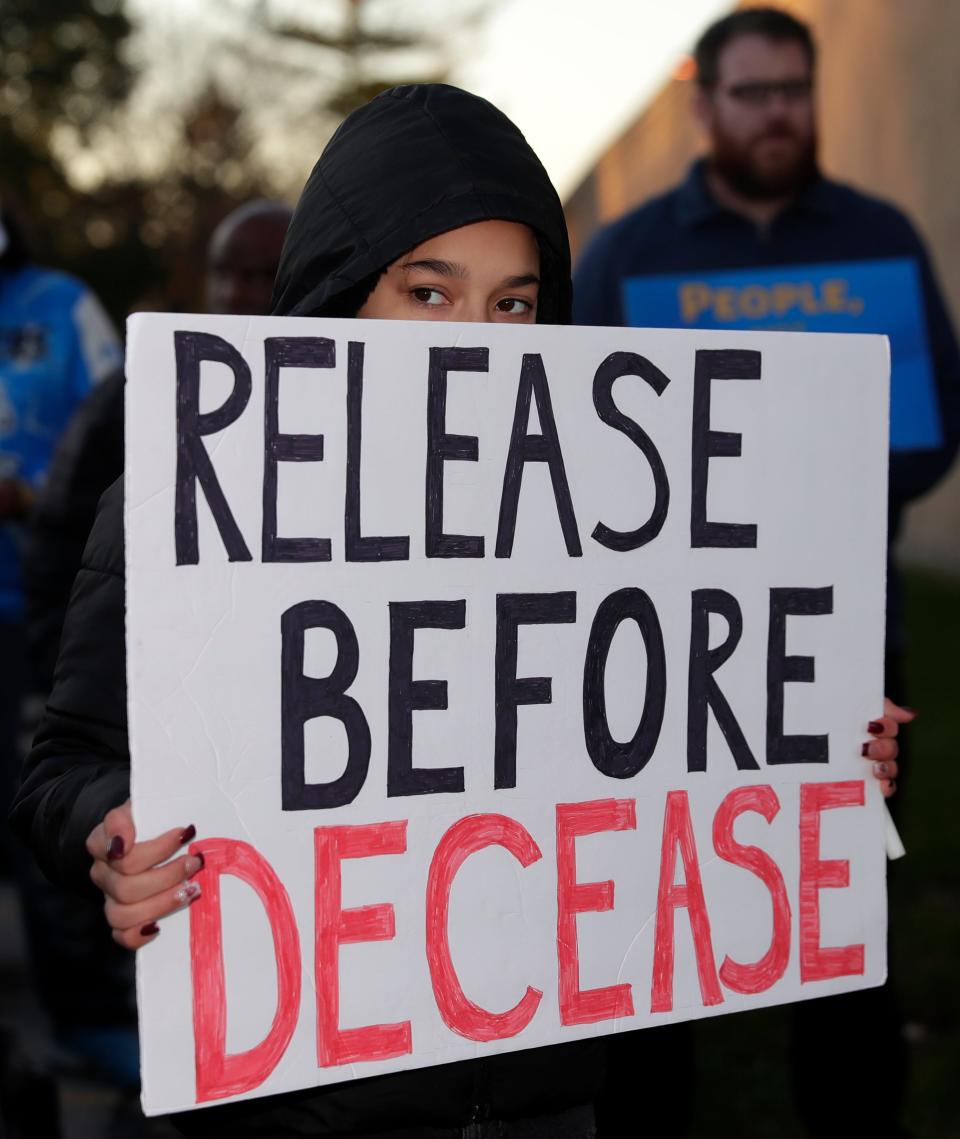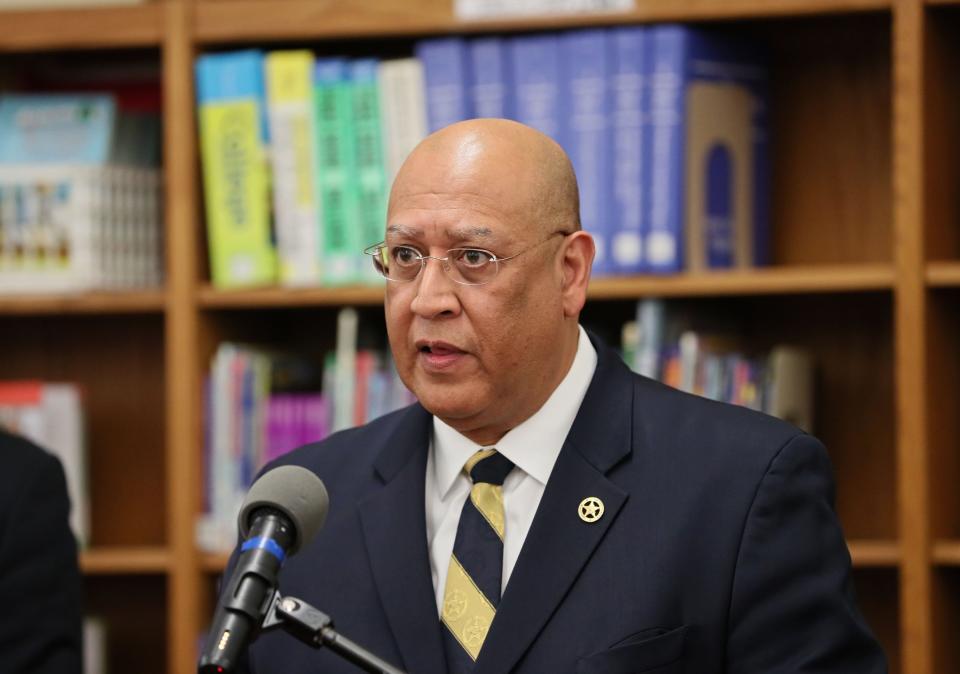Wisconsin's DOC doesn't notify the public when a prisoner dies. How are their deaths investigated?
For years, Wisconsin's prison system has been in a state of turmoil with reports of poor mental health and health care access, never-ending lockdowns, increased assaults and misconduct, and deteriorating living conditions.
Now, three in-custody deaths have been reported in the span of four months at Waupun Correctional Institution, one of the state's maximum security prisons. Another four people incarcerated at different Wisconsin prisons have died since March, and one of the deaths is being investigated as a homicide.
DOC has long been criticized for its lack of transparency when it comes to reporting in-custody deaths, including how and when they occur.

The agency does not notify the public when a prisoner dies in its custody. During the pandemic, the DOC began reporting coronavirus-related in-custody deaths after local pushback, but has since taken that data off its website.
Media outlets often independently track down the identity of the individual and the details behind their death from local law enforcement or family members.
By comparison, the Milwaukee County Jail typically releases information shortly after a death has occurred in its custody, usually providing the age and gender of the individual, as well as the date and time of the death.
"Tracking and investigating the deaths of incarcerated people provides crucial information about the conditions of Wisconsin’s jails and prisons and should be regularly reported to the public," said Timothy Muth, interim legal director for the ACLU of Wisconsin. "When people are dying in our jails and prisons, officials must be held responsible to the community for those deaths and make changes to improve conditions for those incarcerated."
Here's what to know about how deaths in Wisconsin prisons are tracked and investigated:
Who is tracking deaths of people in Wisconsin prisons?
For two decades, the U.S. Department of Justice's Bureau of Justice Statistics collected data on incarceration deaths directly from jails and state correctional departments under its Mortality in Correctional Institutions program.
The program, which began in 2000, came about as a response to the Death in Custody Reporting Act that also passed that same year.
The program collected data on the number of deaths by year, as well as the age, race or ethnicity, sex, and cause of death of the people who died.
Between 2001 and 2019, federal data shows that the number of deaths in Wisconsin's prisons each year remained fairly steady, ranging from a low of 25 deaths to a high of 66 deaths.
In total, Wisconsin reported 857 deaths between 2001 and 2019. Of those deaths, 744 were natural (including heart disease, cancer, AIDS-related and respiratory illnesses), 88 were suicides, 13 were caused by drug or alcohol intoxication, six were accidental and one was a homicide.
In 2013, a new Death in Custody Reporting Act required states receiving federal grants to report incarceration deaths to the DOJ. States that failed to submit information could lose up to 10% of their funding.
But in 2021, the DOJ's Bureau of Justice Statistics quietly shuttered the program, with its last year of data collection in 2019.
Last year, a 10-month investigation released jointly by the U.S. Senate’s Permanent Subcommittee on Investigations and the U.S. Government Accountability Office found that the bureau had failed to enforce the Death in Custody Reporting Act of 2013 and undercounted almost a thousand deaths of people incarcerated in jails and prisons nationwide.
The Department of Justice's Bureau of Justice Assistance has since taken over reporting on incarceration deaths and began its data collection in 2020.
The bureau requires agencies to provide the name, date of birth, gender, race and ethnicity of the individuals who died in their custody. Agencies must also provide the date, time and location of death, as well as a brief description of the circumstances surrounding the death.
To date, the bureau has yet to release any reports on the data it has collected.
What happens after someone dies in a Wisconsin prison?
Each institution, or prison, must follow departmental policy following an in-custody death, according to policies and procedures issued by the DOC.
First, a physician, coroner or medical examiner must pronounce the individual deceased.
Crime scene security measures are implemented to preserve evidence. The body may not be moved until authorized by the coroner or medical examiner or any law enforcement personnel involved.
After the warden is notified, the death must be reported to local law enforcement, which conducts their own investigation. Under DOC policy, law enforcement is not allowed to review the prisoner's protected health information unless permitted by a judge, but the county coroner or medical examiner can.
Once the scene is cleared, findings from the facility's preliminary investigation are reported to the warden.
Next of kin are then notified of the death. However, under DOC policy, the department will not disclose any private health information or details about the cause of death.
For suicide deaths, additional reporting is required. All staff who had substantial contact with the prisoner in the 24 hours leading up to a suicide must be interviewed or submit an incident report detailing what they knew of the individual and the death.
Staff are required to document any conversations with the individual who died in the two weeks prior to their death and also make a list of prisoners housed in the same unit around the time the death occurred.
The prison will then carry out its own internal mortality review, which will look into the circumstances surrounding the death and identify areas of improvement. The review team must convene within 20 working days following an anticipated death, and 10 working days following an unanticipated death.
The review team is composed of the prison's key leadership and medical staff, including the warden or superintendent. In the case of an unanticipated death, the team will also include the mental health, psychiatry and psychology directors, as well as a psychological services unit representative if the death was by suicide.
The internal review team's findings are then submitted to the DOC’s Committee on Inmate and Youth Deaths.
Who investigates deaths of prisoners in Wisconsin?
Prisoner deaths are investigated internally by the DOC's Committee on Inmate and Youth Deaths and externally by local law enforcement.
The committee meets at least quarterly, conducting reviews of prisoner deaths at both adult and juvenile facilities.
The committee consists of a warden or superintendent, a health services unit manager, a community emergency service individual, a forensic pathologist, a physician from University Hospital or UW Foundation, a physician from a private health organization, a registered nurse from a private health care organization, a registered nurse from another state agency and a psychiatrist who does not work for the DOC.
The purpose is to review causes and circumstances surrounding the death, and identify policies or procedures that need to be improved.
A psychologist or other qualified mental health professional will conduct what the DOC calls a "psychological autopsy" — laying out factors that led to or may have contributed to the death.

Once the review is completed, the committee sends recommendations for follow-up to appropriate employees with the DOC's Continuous Quality Improvement program, as well as DOC Secretary Kevin Carr and other appropriate staff.
DOC must monitor whether the recommended corrective actions are implemented by the respective prison.
Does the Committee on Inmate and Youth Deaths release its investigations publicly?
Most of the discussions carried out by the Committee on Inmate and Youth Deaths take place behind closed doors, according to the handful of minutes published by the DOC. The public can submit comment.
The committee does not notify the public of its findings or specify whether there is enforcement if their recommended corrective actions are not implemented.
Contact Vanessa Swales at 414-308-5881 or vswales@gannett.com. Follow her on X at @Vanessa_Swales.
This article originally appeared on Milwaukee Journal Sentinel: How does Wisconsin track and investigate prison deaths?

